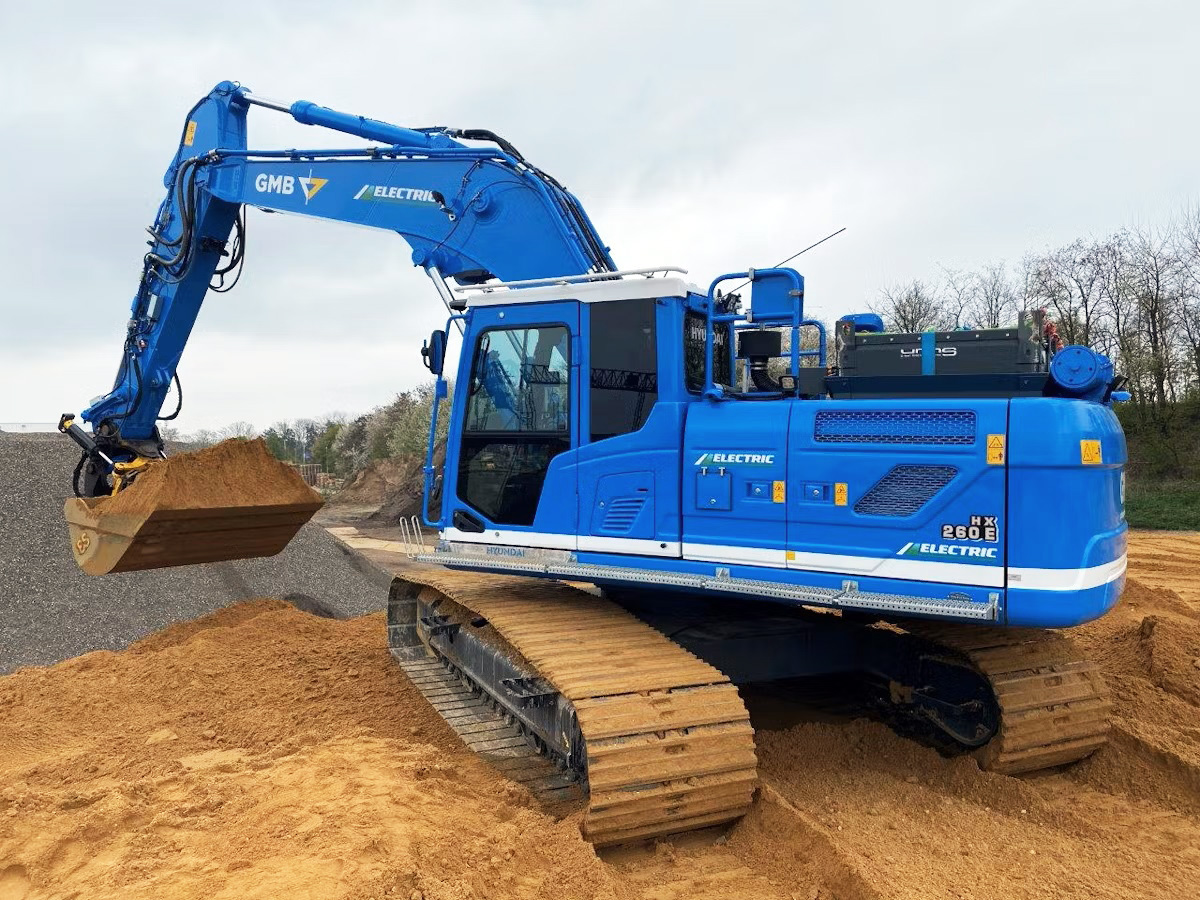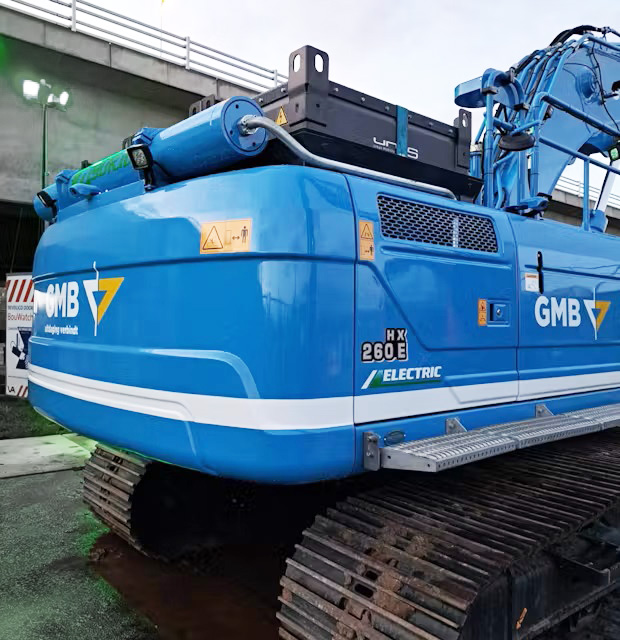Energy recovery on electric Hyundai HX260ALE for GMB
Energy recovery on electric Hyundai HX260ALE for GMB
Does energy recovery on the boom contribute to a longer-term use of an electric excavator? Van der Spek Vianen and GMB will test it in practice on a new electric Hyundai HX260ALE, which is factory equipped with a new EPFC system with an electronically proportionally controlled main pump for hydraulics.
The hybrid system of energy recovery on the hydraulics is not new. Van der Spek Vianen has often used the French eco-nergy system, but on conventional diesels. The principle of this is that the boom builds up pressure in a nitrogen-filled cylinder when it is lowered. This does not cost any energy because gravity does its job. The high pressure in the nitrogen cylinder is then reused when lifting the boom. It is already the sixth time that Van der Spek has installed this hybrid system for GMB. Several manufacturers also apply such systems, with lowering or with the swinging of the boom.
Fuel economy
The exact fuel savings of the system are difficult to demonstrate because conditions are never comparable, says Arjan Uittenbogaard of Van der Spek Vianen. “We did measure at companies with three Hyundai HX300 machines that were used for crushers. Without the system, consumption was 20 liters per hour. In one hybrid it was just over 13 litres per hour and in the other 15 litres per hour. But the crane deployment and working method was also slightly different there.’
Faster lifting
Where fuel savings are difficult to measure, it is demonstrable that the system provides additional energy gains. Initially, this results in a high speed when lifting the boom. ‘This allows you to work faster. Then you can do the same with a 30-tonner as with a regular 35-tonner. If you want to properly determine the fuel gain and efficiency, you should not look at the consumption per hour, but at the consumption per m3.’
Electronic pump control
In the new electric Hyundai HX260ALE that Van der Spek had converted for GMB by UMS, that ‘problem’ could easily be solved. Hyundai’s new machines are equipped with an EPFC system, which electronically controls the main pump of the hydraulics and has power and fine mode control capabilities. This makes it easy to adjust the speed of lifting the boom by the hybrid system. It is now adjusted in such a way that it is the same as a conventional machine. As a result, the profit from the hybrid system goes entirely to energy savings, while the efficiency and performance of the machine remain the same.
Full day running
This is important for a battery-powered machine because its usability mainly depends on the number of hours that the machine can run in a day. With three battery packs of 130 kW, a machine can in principle run for eight hours, but not if, for example, it has to break up heavy clay all day. A larger battery pack is of course possible, but the costs are considerably higher than a standard battery pack and the weight also increases as a result. Both are undesirable and so Van der Spek and GMB started looking for other solutions.
GMB already has two electric Hyundai excavators running. The third machine thus gets the hybrid system of energy recovery.
Less space
Installing this system on an electric machine required a slightly different approach than on a conventional diesel machine. Because of the battery pack, there is less space on the back of the machine to place the required cylinder. That is why an extra slim and long piston accumulator has now been chosen.
Optimal cooperation
The hybrid system can also be switched off. In practice, however, train drivers do not do that, uittenbogaard knows. And with the new EPFC system, that should no longer be necessary at all. The hybrid system and the pump now work optimally together during lifting, so that the system even has advantages when finishing.



